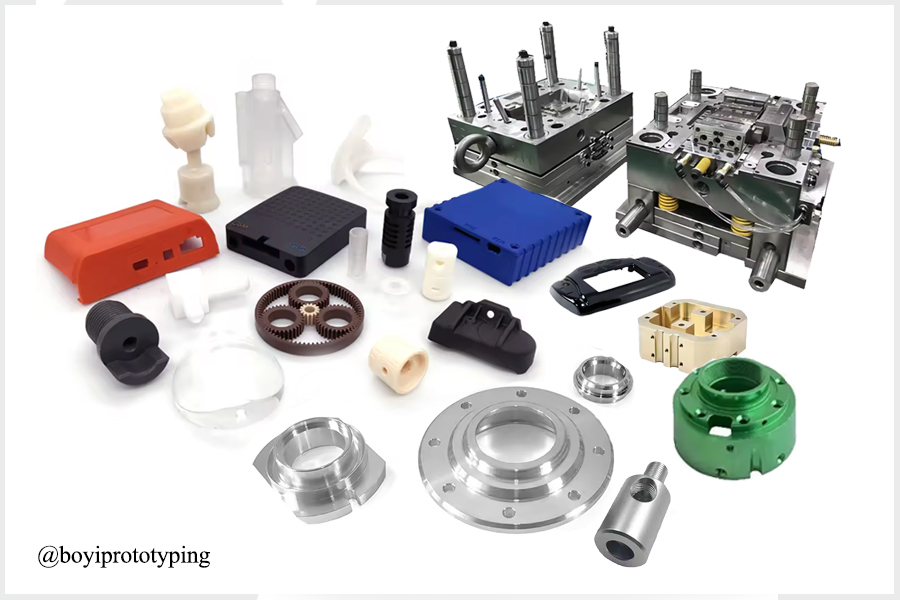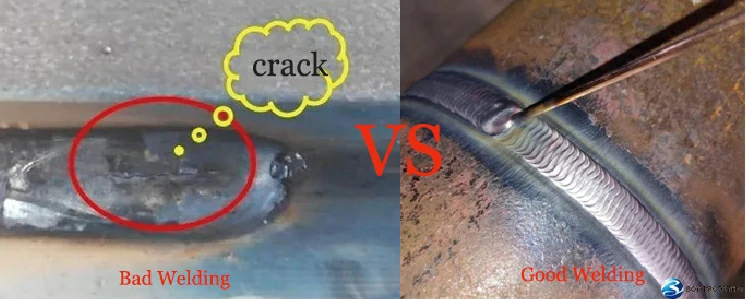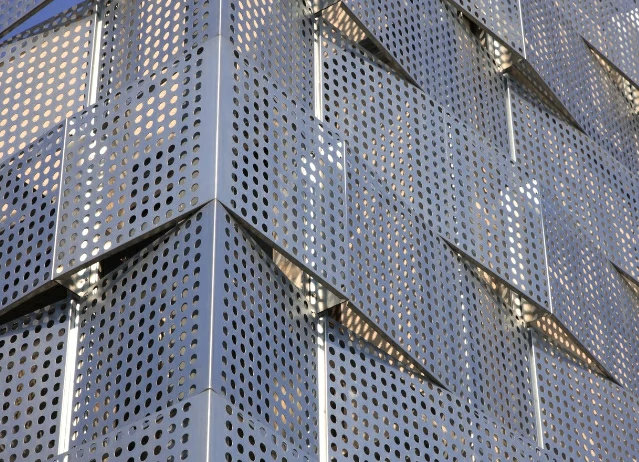Welding joints are fundamental components in the construction and fabrication of metal structures. They determine the strength, efficiency, and overall performance of the welded assembly. Understanding the different types of welding joints is crucial for selecting the appropriate method for specific applications.
Difference Between a Weld and a Joint
The key difference is that joints refer to the physical connection points between metal pieces, while welds refer to the method of fusing those pieces together. A single joint can be welded using various weld types, depending on the design and strength requirements.
Joints:
Joints refer to the connection points or interfaces where two or more pieces of metal are brought together to form a larger structure or part. Joints can be classified based on their design and intended purpose, such as lap joints, butt joints, T-joints, corner joints, and so on. The choice of joint type depends on the application’s requirements, including the forces and stresses it will encounter.
Welds:
Welds refer to the actual process of fusing the metal pieces within a joint using heat and, often, a filler material. Welds are created using various welding techniques, such as MIG (Metal Inert Gas), TIG (Tungsten Inert Gas), stick welding, or arc welding. Different types of welds exist, such as fillet welds, groove welds, plug welds, and spot welds, each with its own characteristics and applications.
5 Common Types of Welding Joints

Welding joints are classified based on how the pieces of metal are joined together. There are a wide variety of types of welded joints, each carefully selected for specific application needs, material properties and design considerations. Here are some common types of welding joints:
Butt Joint Weld

A butt joint refers to aligning the edges of two steel plates opposite each other and joining them tightly through welding processes to form a straight line on their surfaces. This type of joint ensures the strength and continuity of the steel plates at the connection, making the overall structure more stable.
In practical applications, the included angle of a butt joint is typically greater than or equal to 135° and less than or equal to 180°. This angle range ensures that the steel plates can fit closely during welding and reduces welding stress and deformation.
The welding process for butt joints can be varied and adjusted according to specific applications and needs. Different groove shapes, layering and gap widths will affect the quality and performance of the welding. The following are some common butt joint welding head types:
- Square groove
- Single bevel
- Double bevel
- Single J
- Double J
- Single V
- Double V
- Single U
- Flare V
- Double U
- Flare bevel weld
- Flanged butt weld joint
Before welding, the welding surface is removed from impurities, oils and oxides, as well as necessary edge preparation such as cutting, grinding and preheating. These steps ensure that the welded surface is clean, flat and properly fused.
The shape and size of the edge preparation can be selected and adjusted according to the specific welding needs. They can be the same or different to suit different metal types, thicknesses and welding requirements. The main purpose of edge preparation is to increase the area of the welding area, improve the penetration rate, and reduce the possibility of bad welding.
Common butt welding defects include burn-out, porosity, cracking, or underpenetration. The risk of these defects can be significantly reduced by adjusting welding parameters, optimizing the welding process and adopting appropriate welding techniques.
T-Joint Weld

T-joint refers to the welded joint formed by two components perpendicular to each other or tilted at a certain Angle. Specifically, when two parts intersect at a 90° Angle, a T-welded joint is formed.Because the Angle and position relationship between the two welds needs to be precisely controlled, the welding operation of T-joints is more difficult than that of other types of joints. Tee joints can be subdivided into these weld types:
- Plug weld
- Slot weld
- Bevel-groove weld
- Bevel-groove weld
- Fillet weld
- J-groove weld
- Melt-through weld
- Flanged T joint
When welding a T-joint, it is important to place the weld on the same side of the joint, which will be the main area under stress or load. A shock or load applied from the other side of the joint may cause the welding to fail. To avoid this, if the stress is applied from both directions, consider welding on both sides to achieve maximum strength.
T-joints can be welded easily in flat, horizontal, vertical, or overhead positions where other connection designs may be more difficult to weld. This flexibility makes T-joints widely used in a variety of engineering and manufacturing applications.
Corner Joint Weld

Corner joints refer to the intersection of two pieces joined at a 90-degree angle, resembling the shape of an ‘L’. This joint occurs where two pieces of metal are perpendicular to each other in an L-shape or T-shape. Corner joints can be open (one side accessible for welding) or closed (both sides accessible). These joints are straightforward to assemble and often require minimal or no edge preparation.
This joint is not only used for the Angle connection between the plate and the plate, but also often used for the Angle connection between the tube and the plate, or between the tube and the tube.Type of welds used for corner joints:
- Bevel-groove weld
- Corner-flange weld
- Edge weld
- Fillet weld
- Flare-V-groove weld
- J-groove weld
- Spot weld
- Square-groove weld or Butt weld
- U-groove weld
- V-groove weld
These joints are among the most commonly encountered in the sheet metal industry, especially in the construction of frames, boxes, and various other applications. When fitting up an outside corner joint, there are two primary configurations: V-groove (A), Square butt joint (B).
Lap Joint Weld

Lap joint welding is a welding technique where two pieces of metal are overlapped and welded together. This technique is essentially a modified version of the butt joint, with the main difference being that the metals are not placed flush against each other but instead overlap. Lap joints are commonly used to join two pieces of metal with differing thicknesses.Here are the welding styles for lap joints:
- Bevel-groove weld
- J-groove weld
- Flanged lap joint
- Flare-bevel-groove weld
- Slot weld
- Spot weld
- Fillet weld
- Seam weld
Lap joints are often used in sheet metal applications, such as ductwork, frames, and other structures. However, they are rarely used for thicker materials due to potential drawbacks like lamellar tearing or corrosion caused by the overlapping materials.
To mitigate these potential issues, it is important to use the correct welding technique and modify variables as necessary. This includes controlling welding speed, temperature, and penetration to ensure a strong and reliable joint. Adjusting the gap between the overlapping metals, the weld size, and the number of passes can also help optimize the lap joint for specific applications.
Edge Joint Weld

Edge joint welding involves placing the metal surfaces together so that their edges align evenly. This joint design can be achieved by bending one or both plates at an angle to ensure a flush fit. The primary purpose of an edge joint is to join parts securely while distributing stresses evenly.
Edge joints and corner joints have many similarities, but the key difference is the location of the joint relative to the workpiece. A corner joint is typically located on the outer edge or corner of the workpiece, while an edge joint can be located on the inside or outside edge. The choice between an edge joint and a corner joint often depends on the specific application requirements, material thickness, and the desired level of strength and rigidity.
Edge joints are commonly used in sheet metal work and for joining components where a flush edge is desired. They are versatile and can be used in various orientations depending on the welding process and joint configuration.For edge joints, several groove styles are commonly used:
- U-groove
- V-groove
- J-groove
- Corner-flange
- Bevel-groove
- Square-groove
- Edge-flange
- Square-groove weld or butt weld
The forces that cause stresses in welded joints include tensile, compression, bending, torsion, and shear. Edge joints are generally simpler to create compared to other joint types, but they should be avoided in applications where the pieces will be subject to high stress or impact loads.
How to Choose The Right Type of Welding joint?
When selecting the optimal welding joint type for a sheet metal project, several crucial factors must be taken into account to guarantee strength, durability, and efficiency. The type and thickness of materials, specific application requirements, and the availability of welding processes and equipment are all key considerations.
To assist in making an informed decision, here is a comparison table outlining different criteria for various welding joint types:
| Factor | Butt Joint | Corner Joint | T-Joint | Lap Joint | Edge Joint |
|---|---|---|---|---|---|
| Material Thickness | Suitable for all thicknesses | Suitable for moderate to thick materials | Suitable for moderate to thick materials | Best for thin to moderate materials | Suitable for thin materials |
| Strength Requirements | High strength with full penetration | High strength with proper weld technique | High strength with fillet or full penetration | Moderate to high strength with fillet welds | Moderate strength, depends on weld type |
| Joint Accessibility | Requires access to both sides | Can be open or closed, depending on design | Typically accessible on one side | Accessible on overlapping edges | Edge access only, typically one side |
| Ease of Preparation | Requires precise alignment and preparation | Moderate preparation, may require beveling | Moderate preparation, often fillet welded | Simple preparation, minimal edge preparation | Minimal preparation, edges aligned and welded |
| Welding Distortion | Can be high, requires control techniques | Moderate, needs careful sequence control | Moderate, needs careful sequence control | Low to moderate, minimal distortion control | Low, minimal distortion control needed |
| Common Applications | Structural beams, pipelines, heavy fabrication | Frames, enclosures, box structures | Structural frames, brackets, stiffeners | Sheet metal, automotive, light structures | Sheet metal work, non-structural applications |
| Aesthetic Considerations | Can be ground smooth for appearance | Corner appearance can be managed | Fillet welds can be blended or left visible | Overlapping edges may be visible | Minimal visibility, can be finished easily |
| Welding Process | Suitable for MIG, TIG, Stick, Flux-cored | Suitable for MIG, TIG, Stick, Flux-cored | Suitable for MIG, TIG, Stick, Flux-cored | Suitable for MIG, TIG, Stick, Spot welding | Suitable for MIG, TIG, Stick |
How an Understanding of Welding Joints Applies to a Career in Welding?
In a career as a welder, a thorough understanding of welding joint design is paramount. This knowledge enables welders to comprehend the physics behind joint design, recognizing and anticipating the diverse forces that weldments encounter in real-world applications. Engineers utilize advanced computer simulations to predict the strength requirements of a weldment under static and dynamic loading conditions.
Modern welders are expected to be adept at analyzing the types of forces acting on a weldment and selecting the optimal joint design to ensure structural integrity. An incorrectly configured weld joint can lead to catastrophic failures, such as cracking or delamination, due to material defects. Skilled welders must possess the ability to adjust welding variables to mitigate these risks.Acquiring proficiency in handling various welding joints and techniques requires both hands-on practice and formal training.
Tips for Optimal Weld Joint Performance and Efficiency
Achieving optimal performance and efficiency with weld joints involves several key considerations and practices. Here are some tips to help ensure high-quality weld joints:
- Proper Joint Preparation: Ensure that the joint surfaces are clean, free of contaminants such as rust, paint, oil, and moisture. Properly prepare the joint geometry according to the welding process requirements (e.g., beveling for certain types of welds).
- Material Preparation: Use appropriate welding consumables (electrodes, filler metals, shielding gases) suitable for the base material being welded. Match the filler metal composition and mechanical properties to the base metal to ensure compatibility and strength.
- Welding Technique and Parameters: Follow the recommended welding parameters provided by the welding procedure specifications (WPS). Adjust parameters such as voltage, current, travel speed, and heat input according to the material thickness and joint design to achieve proper penetration and fusion without causing defects.
- Maintain Proper Welding Conditions: Ensure adequate ventilation and shielding gas coverage (if applicable) to prevent oxidation and contamination of the weld pool. Control ambient temperature and humidity to minimize variations in weld quality.
- Control Welding Distortion: Use proper welding sequence and techniques (e.g., backstepping, tack welding) to minimize distortion, especially in large or critical weldments. Preheat and post-heat as necessary to control cooling rates and reduce residual stresses.
- Inspect and Test Welds: Perform visual inspections during and after welding to detect surface defects (e.g., cracks, porosity) and ensure proper bead appearance. Use non-destructive testing (NDT) methods such as ultrasonic testing, radiographic testing, or dye penetrant testing for critical welds to verify internal quality.
- Post-Weld Treatment: Implement appropriate post-weld treatments such as stress relieving or annealing to reduce residual stresses and improve mechanical properties, particularly in high-stress applications.
Importance of Using the Right Type of welding Joint
In the intricate world of welding, selecting the right type of welding joint is crucial for achieving structural integrity, durability, and overall safety.Firstly, it ensures that the weldment is able to handle the specific loading conditions it will be subjected to. Different types of joints have varying strengths and weaknesses, and selecting the appropriate one based on the intended use is critical.
A well-designed joint not only facilitates the welding operation but also enhances the weld’s aesthetic appearance. This is important in industries where the visual appeal of the weldment is a consideration, such as in automotive or architectural applications.
Additionally, the right welding joint type can significantly impact the cost and time efficiency of the welding process. An improperly designed joint may require additional material, labor, or even rework, which can increase costs and delay project completion.
By carefully selecting the appropriate joint type based on the intended use and loading conditions, welders can create strong, reliable, and long-lasting weldments that meet the demanding requirements of their applications.
Conclusion
Understanding these basic types of welding joints and their variations is essential for selecting the appropriate joint for specific welding tasks. Proper joint selection ensures optimal performance, strength, and efficiency in the final welded structure.
Contact us today to learn more about our services and how we can help you achieve your project goals. Discover why businesses around the world choose BOYI for their sheet metal fabrication needs.

Let’s Start A New Project Today
Our engineers will contact you within 2 hours.
FAQ
A butt joint is a type of welding joint where two pieces of metal are aligned in the same plane and joined along their edges. This joint is often used for structural applications because it provides a high-strength connection. Butt joints can be full penetration, where the weld penetrates through the entire thickness of the metal, or partial penetration, where the weld only goes partway through. They are commonly used in pipeline construction, structural steel fabrication, and metal fabrication industries.
They are particularly advantageous for joining thin materials or components of unequal thickness. The overlap provides a larger surface area for the weld, which can enhance the strength of the joint. Lap joints are easy to assemble and weld, making them suitable for applications such as automotive body panels, sheet metal work, and joining metal plates in fabrication processes.
A corner joint occurs when two pieces of metal are joined at a right angle, forming an L-shape. In contrast, a T-joint is formed when one piece of metal is perpendicular to the surface of another, creating a T-shape. Corner joints are often used in frame structures and box frames, while T-joints are common in structural applications where a horizontal piece needs to be joined to a vertical piece.
Catalog: Sheet Metal Fabrication Guide

This article was written by engineers from the BOYI team. Fuquan Chen is a professional engineer and technical expert with 20 years of experience in rapid prototyping, mold manufacturing, and plastic injection molding.




